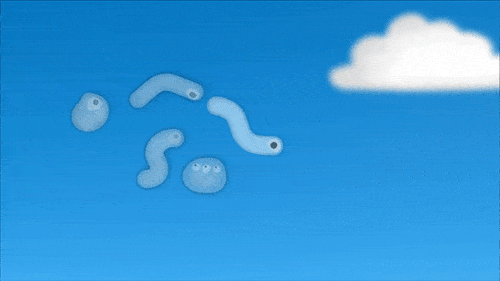If you ever stared into the blue sky or even a blank computer screen, you might have noticed there are some strange blobs floating through the field of vision. These might look like black or gray specks, strings or cobwebs that drift about when you move your eyes, but kind of disappear when you try to concentrate your vision directly onto them. So, what are we actually seeing? Time to dispel another childhood superpower. No, these aren’t aliens trying to make contact or microbes. Nor are they hallucinations, for make no mistake the spots are completely real and there. These spots in your vision are called by doctors eye floaters and are caused by the blue field entoptic phenomenon.
What those little blobs in your eye really are
The retina is a light-sensitive layer at the back of the eye that covers about 65 percent of its interior surface. This is where special cells called cones and rods sense incoming light and pass the signal to the brain where the information is decoded as vision. But this is also an area littered by blood capillaries, which ensure a constant flow of oxygen to the eye. These capillaries sit right in front of the retina, and while they’re very narrow – so narrow that cells need to travel in single-file through them – these block incoming light and actually cast a shadow. Now typically the brain is adapted in such a way that it singles out the capillaries and corrects for the light they’re blocking, so we usually see clear and wide.
That’s not all to the story, obviously. On occasion, a white blood cell comes through the capillary’s cellular parade. These are much bigger than the tiny red blood cells and leave blue light through, causing a lack of shadow matching. Because they’re so big, they actually have to squish through the capillary walls to travel and become elongated.
Also, floaters are often caused by microscopic fibers like clumped proteins found in the vitreous humor, a jello-like substance that makes up most of the eye between the lens and the retina. Though mainly made of water, proteins sometimes cluster (like the egg white turning solid when you fry it) in the vitreous humor, absorb light and thus cast a shadow just like the white cells sometimes. As a result, floaters drift along with your eye movements,and seem to bounce a little when your eye stops.
If you’d like to learn more, check out this amazing animated educational clip made by Michael Mauser.











